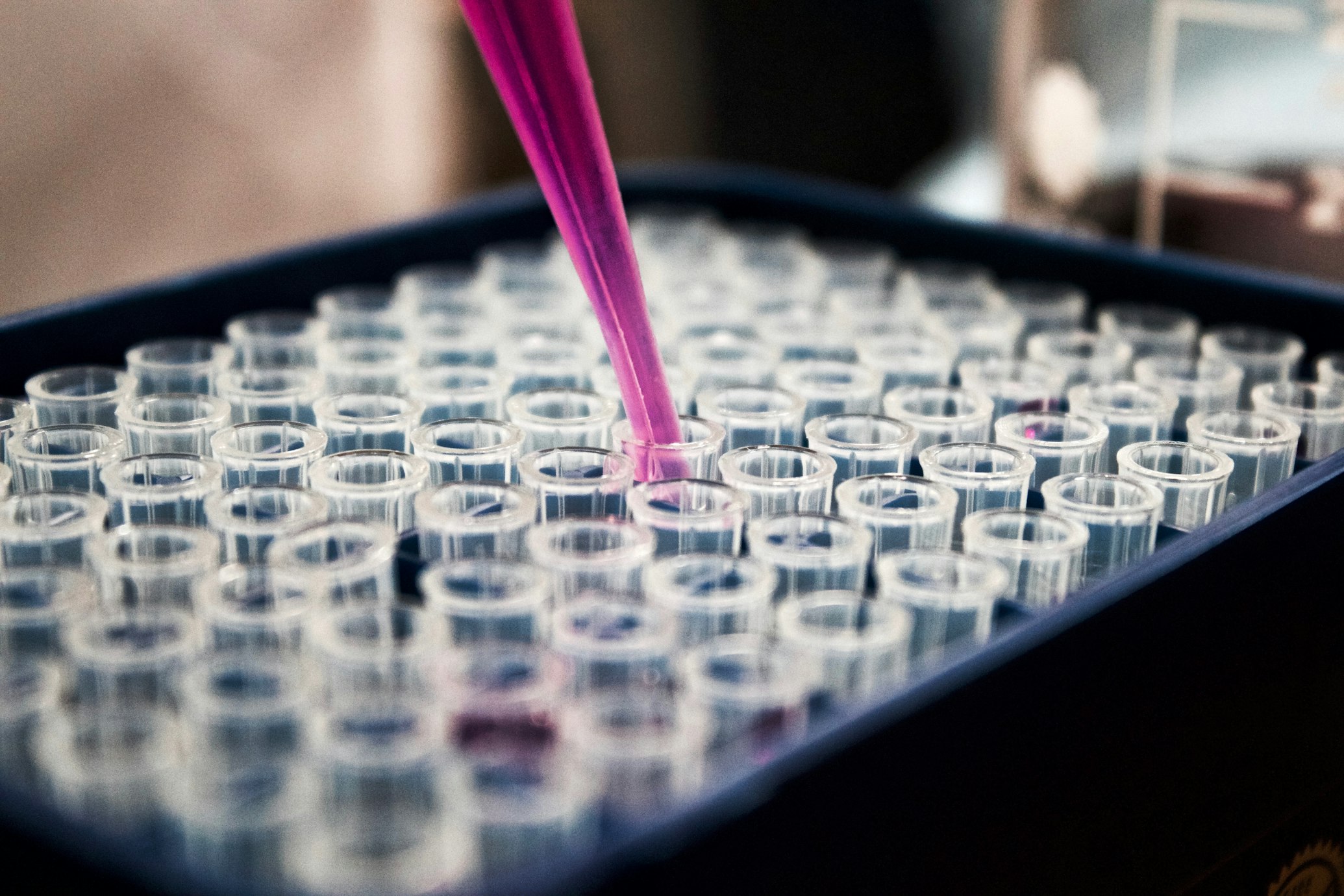The Making of a Modern Biologist
Decoding Life's Blueprint in the 21st Century
Contents
Introduction: The Ever-Evolving Lens of Life Science
Biology is no longer the science of passive observation—it's a dynamic engineering discipline where researchers build tissues, rewrite genomes, and resurrect extinct species. Today's biologists blend computational wizardry with molecular precision to tackle humanity's greatest challenges, from curing genetic diseases to reversing ecological collapse.
Recent breakthroughs—like editing elephant genes to resurrect mammoth traits or turning fermented stevia into a cancer assassin—reveal a field undergoing a radical transformation 1 4 9 . This article explores the tools, theories, and revolutionary experiments defining the modern biologist's quest to decode life's deepest secrets.

Genetic Engineering
Modern biologists use tools like CRISPR to rewrite genetic code with unprecedented precision.

Cellular Organization
Understanding how cells self-organize into complex tissues is revolutionizing regenerative medicine.
Core Concepts Reshaping Biological Understanding
Evolutionary Innovation at the Molecular Level
Ancient DNA as Genetic Puppeteers
Once dismissed as "junk DNA," endogenous retroviruses (ERVs) buried in our genomes are now known to regulate gene expression. A 2025 study revealed that ERVs act as switches controlling embryonic development and immune responses—silencing them disrupts tissue formation, while their reactivation may drive diseases like cancer 1 4 .
Asgard Archaea: Our Cellular Ancestors
Cultivation of Asgard archaea—organisms resembling the first complex cells—has unlocked clues to eukaryogenesis. These microbes, harvested from deep-sea sediments, possess eukaryotic-like genes, suggesting mitochondrial symbiosis began over a billion years ago through metabolic bartering 6 .
Cellular Timekeeping and Self-Organization
Mitochondria as Metabolic Clocks
Mitochondria do more than generate energy—they keep time. Researchers engineered artificial cells with reconstructed circadian machinery, demonstrating how metabolic oscillations synchronize cell division and gene expression. Disrupted mitochondrial rhythms accelerate aging and cancer progression 1 6 .
The Tissue Code
Five simple rules govern how cells self-organize into organs:
- Directional division (cells orient based on neighbors)
- Mechanical tugging (cells "whisper" via force-sensing proteins)
- Programmed death (removes excess cells)
- Asymmetric segregation (creates specialized daughter cells)
- Stochastic differentiation (random fate decisions ensure diversity) 1
In-Depth: The Experiment That Cracked the Tissue Code
Background
How do organs like the colon regenerate perfectly every 3 days? A landmark 2025 study deciphered the universal "tissue code" orchestrating this precision 1 .
Methodology: Colon Organoids Meet CRISPR
- Organoid Engineering: Human colon stem cells were grown into 3D organoids mimicking crypt structures.
- Fluorescent Tagging: Cells expressed fluorescent proteins marking cell-cycle phases (e.g., red for mitosis, green for apoptosis).
- Microscopy & AI Tracking: Time-lapse imaging captured cell movements; machine learning algorithms mapped division axes and neighbor interactions.
- CRISPR Perturbations: Genes suspected in tissue organization (BMP, Notch, Wnt) were systematically knocked out.
- Mechanical Stress Testing: Microscopic beads applied pressure to simulate in vivo forces.
Results and Analysis
| Gene Disrupted | Division Orientation Error | Apoptosis Rate Change | Structural Defects |
|---|---|---|---|
| BMP | 68% misoriented | -40% (reduced) | Crypt fusion |
| Notch | 52% misoriented | +300% (elevated) | Lumen collapse |
| Wnt | 85% misoriented | -90% (reduced) | No crypt formation |
| Control | 8% misoriented | Baseline | Normal architecture |
Key Findings
- BMP Shuttling: BMP proteins form gradients that "instruct" cells to divide away from crowded zones.
- Mechanical Feedback: Cells sense compression via Piezo1 channels, triggering apoptosis in overcrowded regions.
- Regenerative Resilience: Organoids with 30% of cells experimentally killed reorganized flawlessly within 12 hours—proving self-correction is encoded 1 .
| Damage Type | Time to Reorganize | Key Mechanisms Activated |
|---|---|---|
| Laser ablation (20% cells) | 6.2 ± 1.1 hrs | BMP shuttling, asymmetric division |
| Genetic apoptosis induction | 11.8 ± 2.3 hrs | Mechanical tugging, stochastic differentiation |
| Chemical disruption | 18.5 ± 3.4 hrs | Directional division, Piezo1-mediated death |
The Scientist's Toolkit: Essential Reagents Redefining Research
| Reagent | Function | Example Application |
|---|---|---|
| CRISPR-Cas12a Pro | Edits large DNA segments without scars | Inserting mammoth hemoglobin genes into elephants 1 4 |
| Synthetic Embryo Kits | Stem-cell-derived embryo models | Studying human gastrulation without ethical constraints 6 |
| Antibody-Oligo Conjugates | Tagging proteins for sequencing | Simultaneous mapping of 50+ proteins in single cells 8 |
| Circadian Biosensors | Real-time metabolic imaging | Tracking mitochondrial rhythms in cancer cells 1 |
| Eco-Friendly Fermenters | Probiotic-mediated drug synthesis | Converting stevia into pancreatic cancer drug CAME 1 4 |
CRISPR Tools
Precision genome editing has revolutionized biological research and therapeutic development.
Advanced Imaging
New biosensors allow real-time tracking of cellular processes at unprecedented resolution.
AI Integration
Machine learning algorithms analyze complex biological data and suggest new experiments.
Ethical Frontiers and Future Directions
Synthetic Embryo Dilemmas
Lab-grown embryo models now reach developmental stages rivaling natural embryos, forcing debates on their moral status 6 .
Gene Drive Governance
Editing wild populations (e.g., malaria-resistant mosquitoes) requires international frameworks to prevent ecological ripple effects 9 .
AI-Driven Experiment Design
Tools like Design of Experiments (DOE) use machine learning to optimize multi-factor tests (e.g., drug cocktails), replacing inefficient one-factor-at-a-time approaches 7 .
Conclusion: Biologist as Architect of Life
The 21st-century biologist is both decoder and designer—probing ancient viral DNA for new therapies, editing ecosystems, and programming self-healing tissues. As technologies like quantum-based microscopes and in vivo CRISPR delivery mature, the next frontier is clear: predictive control over living systems.
With this power comes profound responsibility—to heal without harm, resurrect without disrupting, and engineer with humility. The development of a biologist, much like the life they study, remains an exhilarating work in progress.